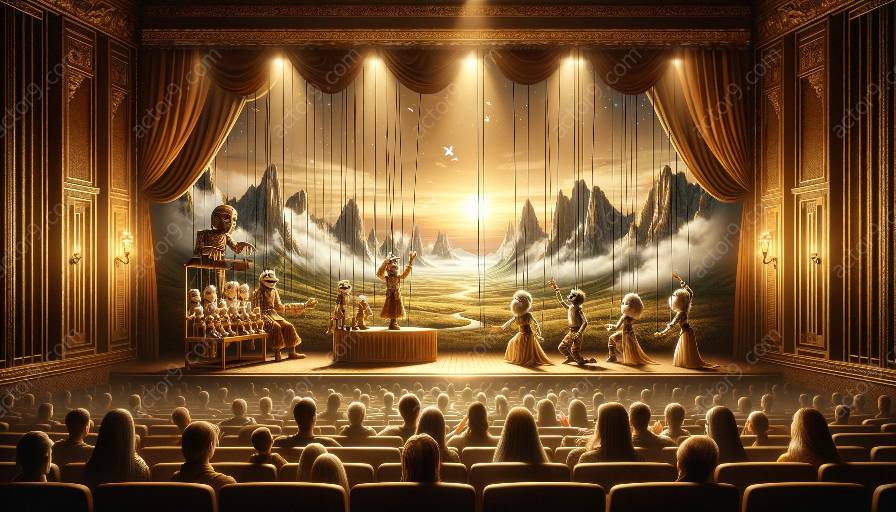Throughout history, puppetry has played a significant role in the theater, offering a unique blend of artistry, storytelling, and performance. From ancient traditions to modern interpretations, the historical and cultural context of puppetry in theater is a fascinating journey that intertwines with acting and the broader theatrical experience.
The Origins of Puppetry
Puppetry has its roots in ancient civilizations, with evidence of early puppetry dating back to ancient Egypt, Greece, and China. These early forms of puppetry served as a means of entertainment, ritualistic expression, and storytelling.
Asian Puppetry Traditions
In Asia, puppetry holds a revered position in cultural and theatrical contexts. From shadow puppetry in Indonesia and Malaysia to the intricate Bunraku puppetry in Japan, the art form reflects the rich heritage and traditions of Asian theater.
European Puppetry Renaissance
During the Renaissance in Europe, puppetry experienced a resurgence, with elaborate marionette performances captivating audiences in countries such as Italy, France, and Germany. These puppet theaters became integral to the cultural landscape, infusing the art of acting with innovative storytelling techniques.
Puppetry in Modern Theater
In contemporary theater, puppetry continues to make an impact, blending seamlessly with traditional acting methods and techniques. From avant-garde experimental productions to mainstream stage shows, puppets are used to evoke emotion, convey symbolism, and push the boundaries of theatrical expression.
The Role of Puppetry in Acting
Actors, directors, and theater practitioners have increasingly embraced puppetry as a vital component of the acting process. The manipulation of puppets demands a unique set of skills and techniques, requiring performers to embody characters through movement, voice, and expression.
Puppetry and Theatrical Innovation
Puppetry's cultural and historical significance has had a profound impact on theatrical innovation, inspiring contemporary playwrights, directors, and designers to explore new realms of storytelling and visual spectacle. This fusion of puppetry with traditional acting techniques has led to groundbreaking theatrical experiences where the boundaries of the art form are continually challenged and expanded.
Embracing Puppetry in Theater
As the boundaries between puppetry and traditional theater continue to blur, contemporary productions are harnessing the power of puppets to create dynamic, immersive experiences for audiences. Whether through elaborate puppetry ensembles or the integration of puppetry elements into actor-driven narratives, the historical and cultural context of puppetry in theater remains a vibrant and essential component of the theatrical landscape.















































